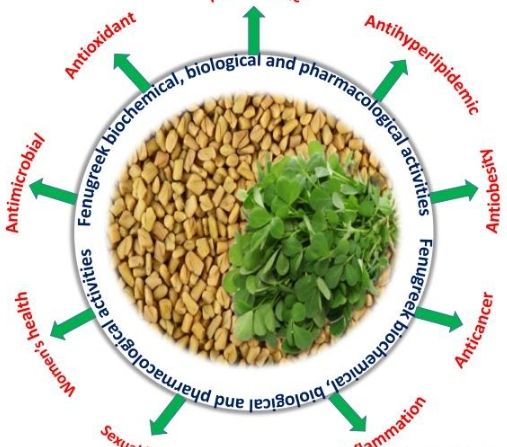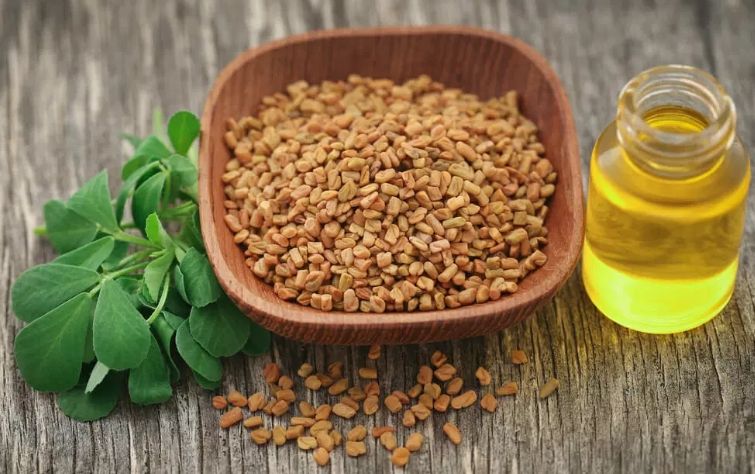Author: CHOCOMACH
July 17, 2025
9758
Fenugreek seeds are the dried mature seeds of the leguminous plant fenugreek. Fenugreek is an annual or biennial herb native to the Mediterranean region, southern Europe and Western Asia, and is now grown all over the world. Its plant is about 60-90 cm tall, with green leaves and small white flowers. After the flowers fall, pods are produced, and the pods contain small golden brown seeds, namely fenugreek seeds.

The origins of fenugreek seeds mainly include the following areas:
★China
⊙Henan Province: Mengzhou City, Jiaozuo City, Henan Province, Yanshi District, Luoyang City, and Kaifeng City are all planted. Among them, Mengzhou City has a long history of fenugreek cultivation, and the fenugreek seeds produced are full and of excellent quality.
⊙Anhui Province: Bozhou City, Fuyang City and other places in Anhui have high production. As an important distribution center for Chinese medicinal materials, Bozhou City has a large trading volume of fenugreek seeds.
⊙Gansu Province: The climate conditions here are suitable for the growth of fenugreek. The fenugreek seeds produced here are of high quality and have a high content of effective ingredients. It is one of the main production areas of fenugreek seeds.
⊙Sichuan Province: It is also one of the production areas of fenugreek seeds, and has a certain trading volume in the local Chinese herbal medicine market.
★India
⊙Rajasthan: It is one of the fenugreek seed production areas in India. Its soil and climate conditions are very suitable for the growth of fenugreek. The yield is high and the quality is good. The fenugreek seeds produced here are highly competitive in the international market.
⊙Gujarat: Fenugreek is also widely planted here. The fenugreek seeds produced here are full and have good color. It is one of the important sources of fenugreek seed exports in India.
⊙Madhya Pradesh: The suitable climate and fertile land provide good natural conditions for the growth of fenugreek. The fenugreek seeds produced here have a certain share in the domestic and international markets in India.
★ Egypt: It is an important production area of fenugreek seeds with a long history of planting. The fenugreek seeds produced in Egypt are also well-known in the international market, and the quality and output are relatively stable.
★ Morocco: The climatic conditions are suitable for the growth of fenugreek. The fenugreek seeds produced are more common in the trade between the Mediterranean region and Arab countries, and are mainly used in local cooking and traditional medicine.
★ Argentina: In recent years, the area of fenugreek planting in Argentina has gradually increased, and it has become an emerging fenugreek seed production area. Its products are mainly supplied to the international market, with excellent quality and certain market competitiveness. In the process of fenugreek seed oil extraction, choosing a suitable oil press is directly related to many aspects such as oil yield, oil quality and production efficiency.
At present, hydraulic oil press and screw oil press are two common equipments in the market, each of which has its own characteristics.

The following will compare these two oil presses in detail to help you make a reasonable choice according to your needs:
▶Advantages of hydraulic oil press:
☉ High oil yield: The hydraulic oil press generates high pressure during pressing, which can make the oil in the oil material fully separated out, and the oil yield is higher than that of the screw oil press.
☉ Good oil quality: The heat generated during the oil pressing process is less and the temperature is relatively low, which will not cause obvious thermal oxidation damage to the oil. It can effectively retain the nutrients and natural fragrance in the oil. The squeezed oil is clear, fragrant, and of high quality. It meets the health quarantine standards and can be eaten directly.
☉ Durable equipment: The static pressure method makes the machine less friction, less mechanical wear, low maintenance rate, long service life, and the price of wearing parts is cheap and easy to replace.
☉ Simple operation: button-type centralized control, low technical requirements for operation, easy to use, just put the oil into the barrel, start the switch, the machine can automatically complete the pressing process.
☉ Wide range of uses: one machine has multiple uses, and can press a variety of oil crops, such as peanuts, sesame, walnuts, sesame, rapeseed, sunflower, cottonseed, soybeans, etc.
☉ Energy saving: Under the same output, it can reduce electric power by 40%. Calculated by saving 6 kWh of electricity per hour on average, it can save 30 yuan of electricity bills per day. It has the characteristics of ultra-low energy consumption and is economical and practical.
▶ Disadvantages of hydraulic oil press:
☉ Low production efficiency: Its pressing process is intermittent, the production efficiency of a single machine is relatively low, and if the oil processing volume is large, the floor area will also be relatively large. It is generally suitable for small-scale production and family use.
☉ Slightly poor adaptability to oil: When squeezing some oils with high fiber content, such as tea seeds and rice bran, the barrel may be blocked, affecting the squeezing efficiency.
▶Advantages of screw oil press:
☉ High output: It can operate continuously with high production efficiency. The daily processing capacity of a single machine is about 3-5 tons. It is suitable for large and medium-sized oil processing plants and places that require continuous production and large processing volume.
☉ Labor-saving operation: The operation technology requirements are low, simple and labor-saving, and the labor intensity is relatively low compared to the hydraulic oil press. Frequent loading and unloading operations are not required.
☉ Strong adaptability: The four-stage squeezing process is adopted. The oil is squeezed four times in the oil press, which can ensure the oil yield of the oil, and can effectively squeeze out the oil from the oil with low oil content.
▶Disadvantages of screw oil press:
☉ Relatively low oil yield: Compared with hydraulic oil press, its chamber pressure is relatively small, and the oil may not be fully squeezed out at one time, resulting in a relatively low oil yield, which is generally 2-3 percentage points lower than that of hydraulic oil press, especially for oils with high oil content, such as peanuts, sesame, walnuts, etc., this disadvantage is more obvious.
☉ Slightly inferior oil quality: Friction generates heat during oil pressing, the pressing time is short, and the temperature is relatively high, which may destroy some nutrients and natural fragrance in the oil, and the oil squeezed out is slightly inferior to the oil squeezed out by hydraulic oil press in quality.
☉ Large wear: The friction in the chamber is large, the mechanical wear is relatively serious, and the maintenance cost and frequency may be high. When choosing a fenugreek seed oil press, if the scale of oil pressing is small and the oil quality requirements are high, the hydraulic oil press is a better choice; if high efficiency and large-scale production are pursued, the screw oil press is more advantageous.
In actual applications, the two types of oil presses are also used in combination. A screw oil press is first used for preliminary pressing, and then a hydraulic oil press is used to perform secondary pressing on the cake after the initial pressing to increase the oil yield.

Service Tel:
+86 136 0865 6963
+86 199 3799 5959
0086 0379-61127277

Email:
chocooilpress@gmail.com info@chocomach.com

Wechat:


WhatsApp:
+86 199 3799 5959